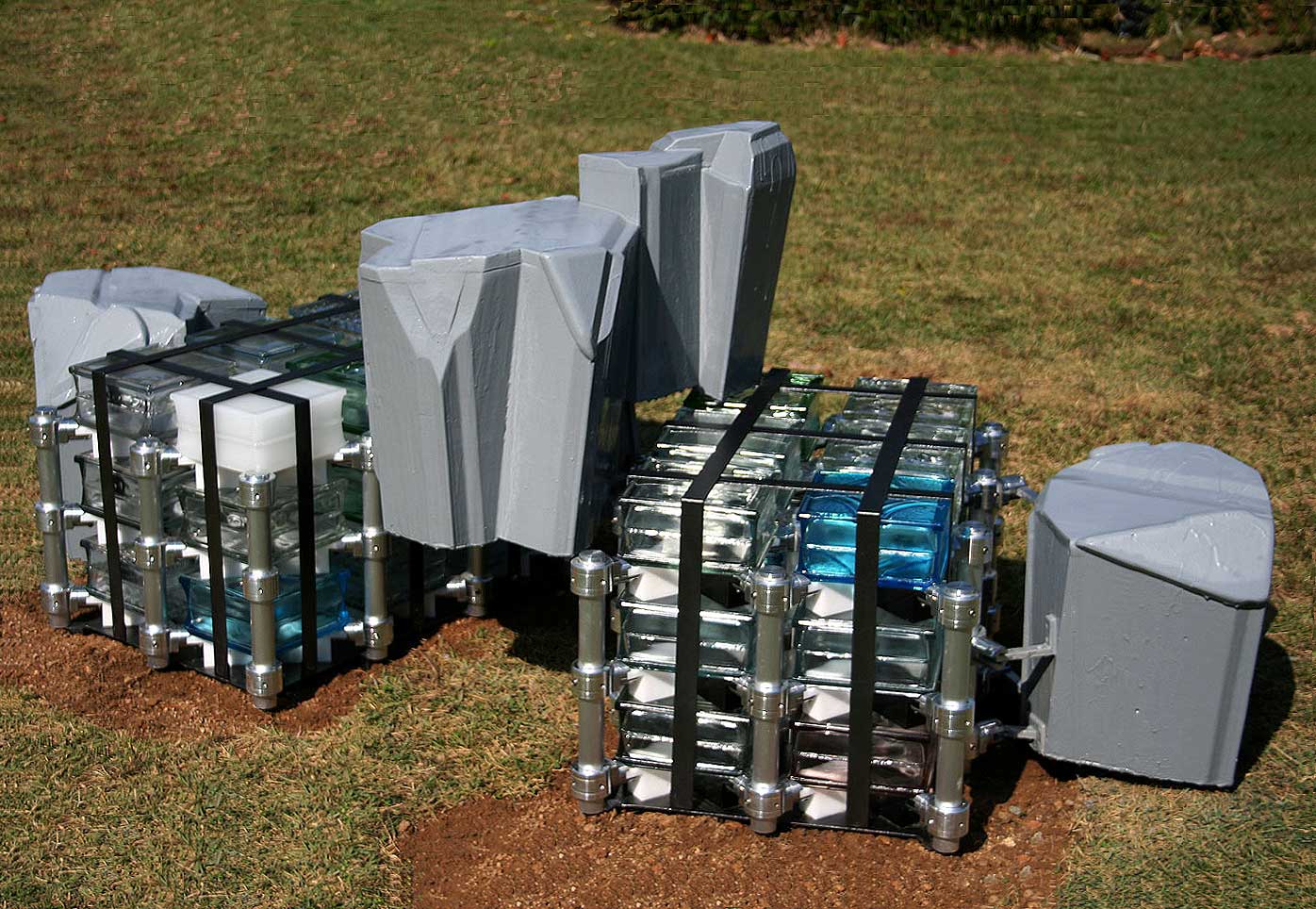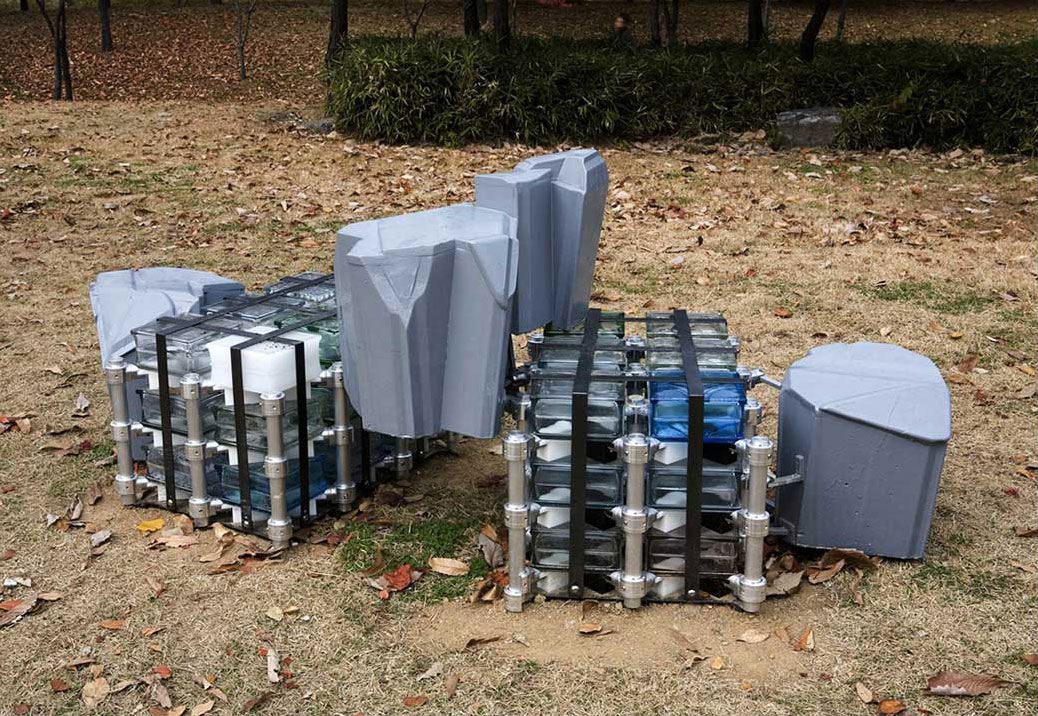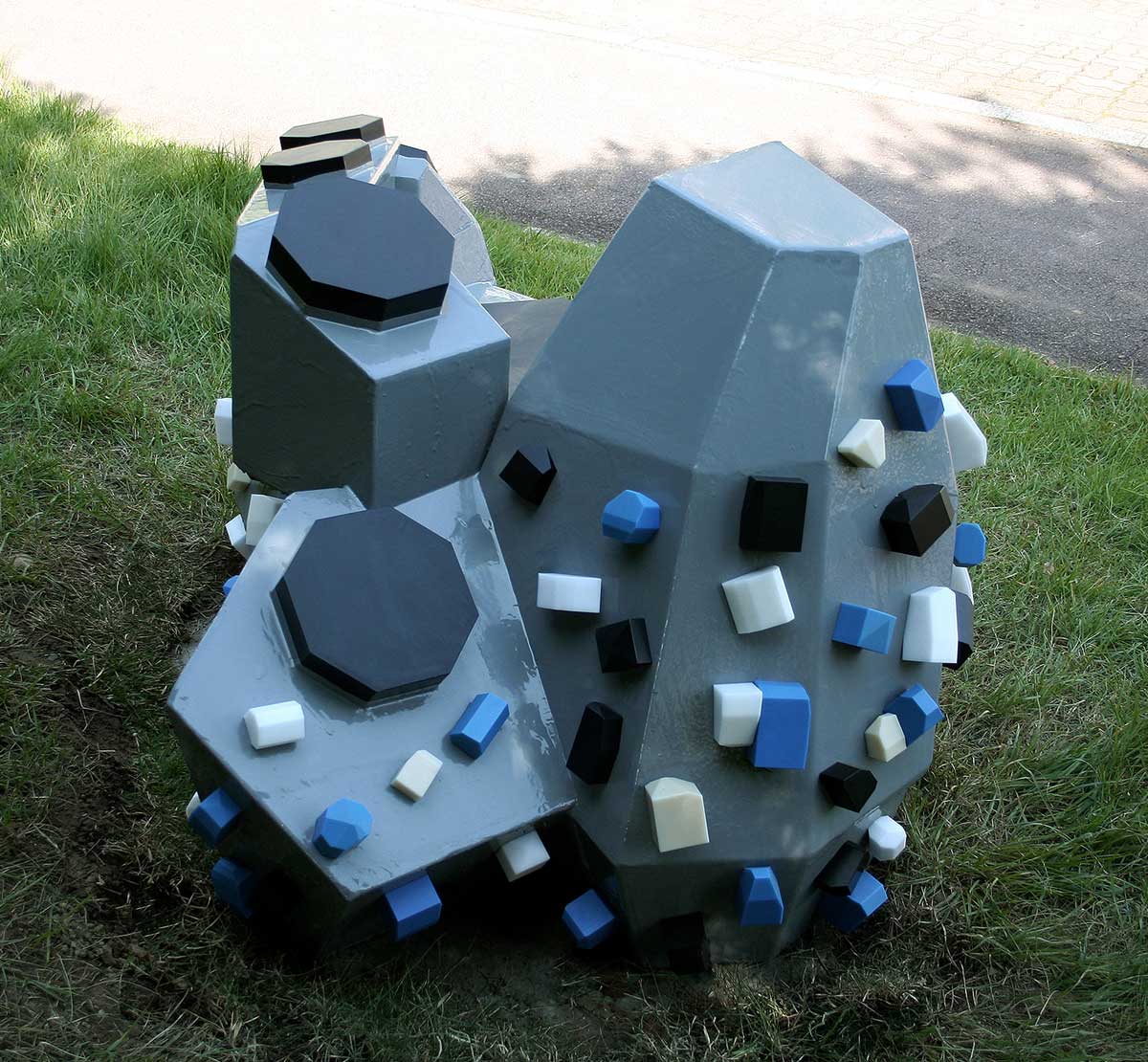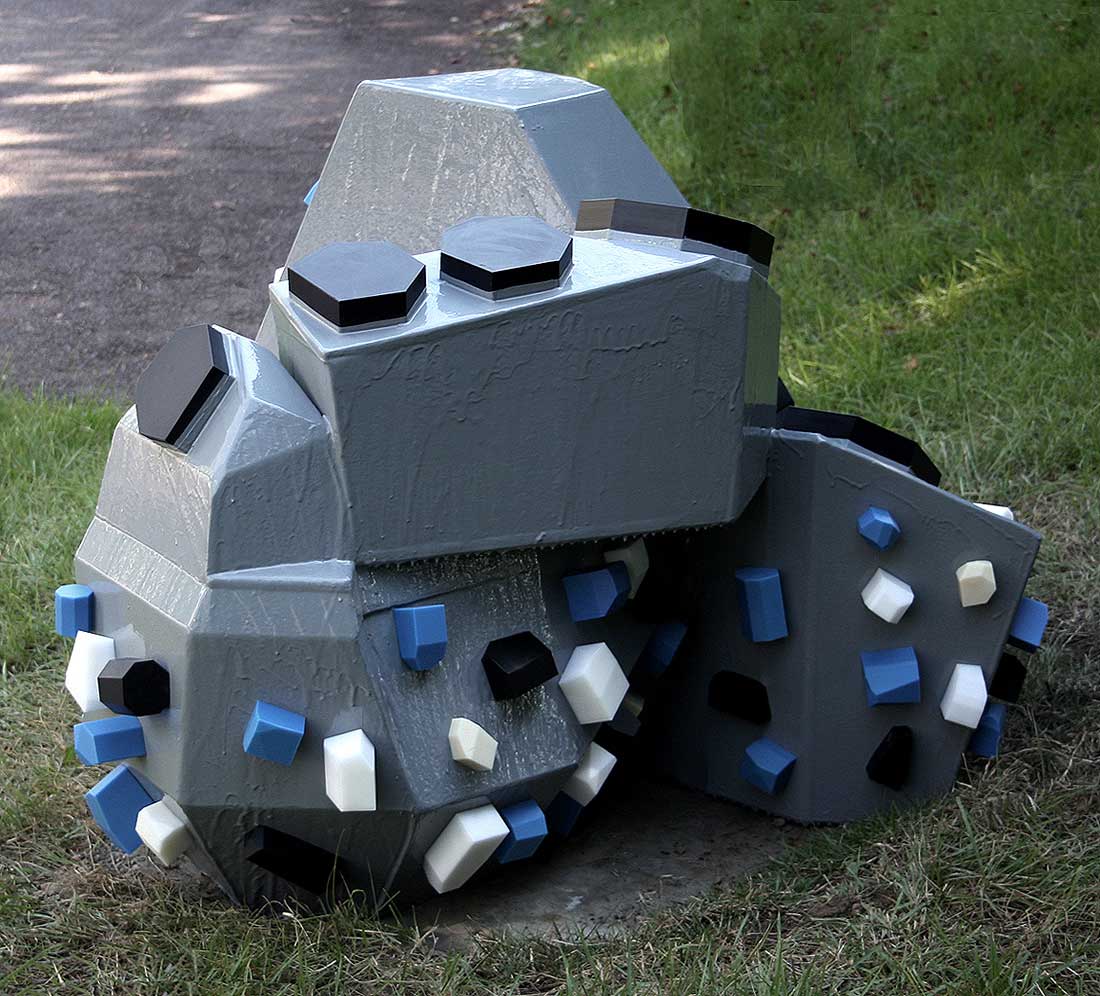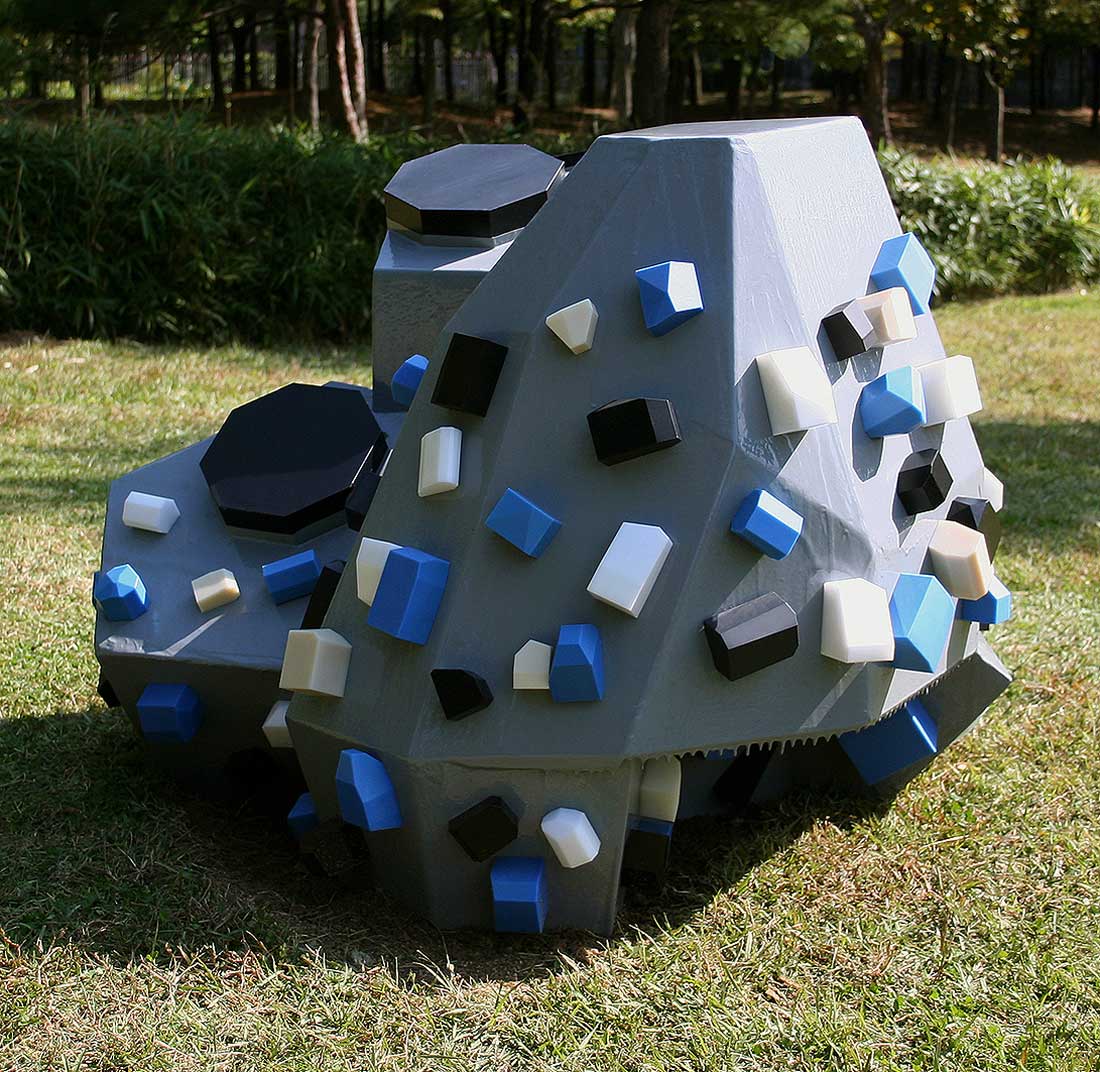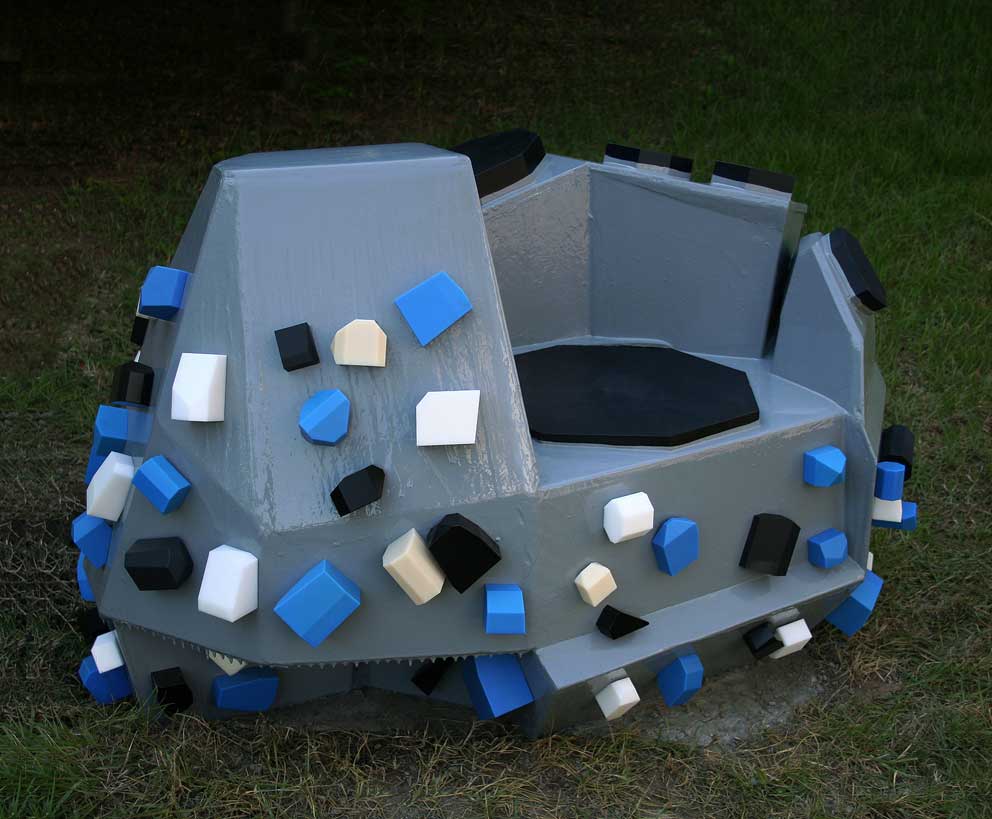How Smart is a Rock?
APAP Public Project, Anyang, South-Korea, 2007
This composition of mixed modern materials builds a social infrastructure which is elegant, entertaining and visionary.
A place to rest and contemplate the world and maybe spend a moment or two of quality time.
How smart Is a Rock?
To appreciate the feasibility of computing with no energy and no heat, consider the computation that takes place in an ordinary rock, although it may appear that nothing much is going on inside a rock, the approximately 1025 (ten trillion trillion) atoms in a kilogram of matter are actually extemely active. Despite the apparent solidity of the object, the atoms are all in motion, sharing electrons back and forth, changing particle spins, and generating rapidly moving electromagnetic fields. All of this activity represents computation, even if not very meaningfully organized.
In terms of computation, and just considering electromagnetic interaction, there are at least 1015 changes in state per bit per second going on inside a 2.2-pound rock, which effectively represents about 1042 (a million trillion trillion trillion) calculations per second. Yet the rock requires no energy input and generates no appreciable heat.
Of course, despite all this activity at the atomic level, the rock is not performing any useful work aside from perhaps acting as a paperweight or a decoration. The reason for this is that the structure of the atoms in the rocks is for the most part effectively random. If, on the other hand, we organize the particles in a more purposeful manner, we could have a cool, zero-energy-consuming computer with a memory of about a thousand trillion trillion bits and a processing capacity of 1042 operations per second, which is about ten trillion times more powerful than all human brains on Earth, even if we use the most conservative (highest) estimate of 1019 calculations per second.
—Ray Kurzweil, “The singularity is near”, p. 131, The Penguin Books-Science

